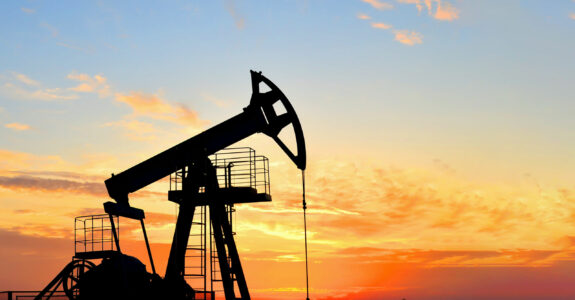
The Proposed Pennsylvania Methane Rule for Oil & Gas, Explained
December 23, 2021
By: Melissa Dakas
Guided by Governor Tom Wolf’s Methane Reduction Strategy, the Pennsylvania Environmental Quality Board voted to move forward with a final, state-level methane rule for the oil and gas industry.
The rulemaking is designed to reduce emissions from natural gas well sites, compressor stations and along pipelines to protect the environment, reduce climate change, and help businesses reduce the loss of valuable energy products.
The rule would be a significant change for producers in the state, which is the second-largest natural gas producer in the U.S., responsible for about one-fifth of the country’s gas output in 2020, according to the U.S. Energy Information Administration.
While many states have imposed methane limits on new wells, Pennsylvania is joining only a handful, including Colorado and New Mexico, that have restrictions on older wells which can be a major source of emissions relative to their production.
The proposed rule provides standards and control requirements for the following oil and natural gas sources:
- Storage vessels in all segments except natural gas distribution are subject to the provisions of the rule if the potential VOC emissions are 2.7 tons per year (tpy) or greater. Applicable sources must reduce emissions 95% by weight or greater through the use of vapor recovery unit (VRU) or control device. Storage vessels claiming exemption to the rule shall calculate emissions on a monthly basis to demonstrate emissions remain below the 2.7 tpy threshold.
- Natural gas-driven continuous bleed pneumatic controllers are subject to the rule if they are located prior to the point of custody transfer of oil to an oil pipeline or of natural gas to the natural gas transmission and storage segment. The continuous bleed pneumatic controllers must limit bleed rate to less than or equal 6.0 standard cubic feet per hour (cfh) if located between a wellhead and natural gas process plant or point of custody transfer to an oil pipeline. Applicable controllers at natural gas processing plants must achieve a zero cfh bleed rate.
- Natural gas-driven diaphragm pumps are subject if they are located at a well site or natural gas processing plant. The natural gas-driven diaphragm pumps located at a well site shall reduce the VOC emission by 95% by weight or greater through the use of a control device or closed-loop system. Applicable pumps located at a natural gas processing plant shall maintain an emission rate of zero standard cubic feet per hour.
- Reciprocating compressors and centrifugal compressors are subject if they are located between the wellhead and point of custody transfer to the natural gas transmission and storage segment
- Reciprocating compressors shall control emissions by replacing the rod packing on or before 26,000 hours or 36 months of operation (whichever comes first) OR route the VOC emissions to a control device or closed vent system by using a reciprocating compressor rod packing emissions collection system that operates under negative pressure.Centrifugal compressors shall reduce the VOC emissions from each centrifugal compressor wet seal fluid degassing system 95% by weight or greater through the use of a closed vent system or control device.
- Fugitive emission components are subject if they are located at a well site, natural gas gathering and boosting station, or natural gas processing plant.
- Well sites: Determine the average production in barrels of oil equivalent (BOE) of the well site using the previous 12 calendar months. Natural gas production is converted to BOE by dividing by 6,000 scf per BOE. Well sites consisting of only oil wells, are not subject to the monitoring requirements if the gas to oil ratio (GOR) of the oil well site is less than 300 scf per barrel of oil; otherwise:
- A well site producing, on average, equal to or greater than 15 BOE per day with at least one well producing at on average, equal to or greater than 15 BOE per day shall conduct monthly AVO inspections and quarterly LDAR (OGI or Method 21) inspections.
- A well site producing, on average, equal to or greater than 15 BOE per day with at least one well producing at on average, equal to or greater than 5 BOE per day shall conduct monthly AVO inspections and annual LDAR (OGI or Method 21) inspections
- Natural gas gathering and boosting station and natural gas processing plants shall conduct monthly AVO inspections and quarterly LDAR (OGI or Method 21) inspections.
- Well sites: Determine the average production in barrels of oil equivalent (BOE) of the well site using the previous 12 calendar months. Natural gas production is converted to BOE by dividing by 6,000 scf per BOE. Well sites consisting of only oil wells, are not subject to the monitoring requirements if the gas to oil ratio (GOR) of the oil well site is less than 300 scf per barrel of oil; otherwise:
In addition to the proposed standards, the rule provides requirements for control devices, implementation of the fugitive emission program, and associated recordkeeping and reporting procedures.
Montrose provides comprehensive services to our clients in the oil & gas industry, including monitoring, LDAR program management and implementation, regulatory compliance, and turnkey services. We also have our teams locally located near major oil & gas facilities – making them familiar with particular challenges and nuances of the area. We’re ready to advise and assist you with these proposed rule changes, and to help you get through this complicated time. For more information, please contact Melissa Dakas at mjdakas@montrose-env.com.
 Melissa Dakas
Melissa Dakas
Ms. Dakas has 20 years of project management and solution development experience in the chemical engineering and environmental compliance fields. The last 15 years of her career have been spent in environmental consulting navigating the complex environmental requirements of the Northeast states, the Caribbean, and the Texas Gulf Coast Regions. Ms. Dakas specializes in air permitting and compliance through working with both industry and government to implement business objectives while conforming to environmental regulations.

